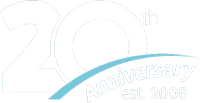Sleep Talk Blog, Health & Wellbeing
Is Seasonal Affective Disorder a Real Thing?
Seasonal Affective Disorder (SAD) is a medically recognised type of depression that manifests during seasons and certain times of the year.
If you have SAD, certain types of weather and certain seasons can cause a long-lasting low mood that affects your life. For example, you might experience intense lows when it’s raining and feel lifted and free when the sun is shining.
Seasonal Affective Disorder (SAD) is a medically recognised type of depression that manifests during seasons and certain times of the year.
If you have SAD, certain types of weather and certain seasons can give you a long-lasting low mood that affects your life. For example, you might experience intense lows when it’s raining and feel lifted and free when the sun shines.
Although SAD is most often associated with weather, it can occur throughout the year for no logical reason. Certain types of weather are likely to trigger SAD, with dull, grey winter weather a common trigger. However, the clocks going back, darker nights, shorter days, and lower sunlight are well-documented triggers.
What are the symptoms of Seasonal Affective Disorder or SAD?
SAD is a type of depression, so the symptoms are identical to other forms of depression. However, everyone experiences depression differently so you may share some of the symptoms listed below and not others:
- Feeling sad, low, tearful, guilty, or hopeless
- Low mood
- Intense lows
- Struggling to find joy in most things
- Social withdrawal
- Losing interest in people
- Losing interest in sex and physical contact
- Wanting to spend time alone
- Taking risks with your health and life
- Increasingly poor diet choices
- Difficulty sleeping, waking up and concentrating
When might I have SAD?

Doctors often describe SAD as “seasonal depression” because it manifests at certain times of the year. The reality is that SAD can affect you at any time of the year, but specific dates, months, weather, and events are common triggers.
For example, you might have SAD at Christmas time, making you socially withdrawn, reclusive, and teary. Or you might have SAD before the clocks go back, making you feel sad, hopeless, and uninterested in your everyday life.
It’s essential to recognise that SAD is not a temporary type of depression, even though it is seasonal. It is a chronic condition but also a treatable one.
What causes SAD?
SAD is one of the most intensely researched types of depression. Several causes have been linked to SAD, including:
- High melatonin levels - excess melatonin production increases the desire to sleep. In winter, people with SAD often report feeling tired and difficult to motivate, which ties in with the fact that melatonin is produced for a longer time in winter.
- Weather and temperatures - it is thought that the body’s release of hormones and use of energy in different weather and temperature conditions trigger SAD. For some people, grey skies and rainy weather cause a downer.
- Disrupted body clock - In countries like England, where there are significant changes in weather patterns and daylight hours, people are more likely to experience body clock disruption, which can trigger SAD.
- Stressful times of the year - Christmas and New Year are the most common months for SAD because they are stressful and intense. Upsetting memories and loneliness can also create a pattern of SAD spread across specific dates.
I think I may be suffering from seasonal affective disorder. How can I help myself?
The best way to help yourself is to talk to someone about your feelings. Following this, you can try the following steps:
- Make the most of natural and cool light - Natural light is essential for our mental health, and cool light sources best mimic it.
- Bringing nature indoors - houseplants and bonsai trees will give you something to care for and connect you to nature without requiring you to leave your house.
- Go for a walk - going for a walk to clear your head is great for your physical and mental health. It could be just what you need for a mental boost.
- If you can’t do anything about it, don’t worry about it - if you can’t do anything about something that is making you depressed, stop worrying about it. Accepting things for what they are will bring clarity to your thoughts.


When and how to get help
When your feelings start interfering with your day-to-day life, you should talk to someone about it. You can begin by speaking to a GP about your mental health. Your GP can prescribe medication and refer you to NHS therapies.
If you need someone to talk to about your feelings and worries, call Samaritans on 116 123 confidentially for free. You can also use this free online NHS tool to find your local urgent mental health helpline.


